
Mountain biking is an exhilarating sport, but the right bike can make the difference between a thrilling adventure and a bone-jarring ordeal. In a recent video by MTB enthusiasts Andoni Arriaga, the team dives deep into the world of full-suspension mountain bikes and assembles a full-suspension bike, explaining why they’re a game-changer for riders tackling rough terrain. Paired with insights from the video, we're spotlighting the Trifox Full-Suspension Mountain Bike—a standout model that embodies the benefits discussed. Whether you're a seasoned rider or a trail newbie, here’s why full-suspension bikes deserve your attention (and why Trifox’s offering might be your next ride). Why Full-Suspension Bikes Shine? 1. Superior Control on Technical Terrain Full-suspension systems absorb impacts from roots, rocks, and drops, keeping your tires glued to the ground. This translates to better handling and confidence when navigating steep descents or tight corners. Rear suspension minimizes vibrations transferred to your body, letting you ride longer without hand, arm, or back fatigue. As the hosts joke, “Your muscles will thank you—and so will your post-ride beer.” 3. Enhanced Traction for Climbing Unlike hardtails, full-suspension bikes maintain tire contact during climbs, preventing spinouts on loose gravel or muddy ascents. 4. Versatility Across Trail Types From cross-country loops to downhill parks, full-suspension bikes adapt to diverse conditions. The video emphasizes that modern designs balance efficiency and plushness, debunking the myth that they’re “too slow” for flat trails. Why the Trifox Full-Suspension Bike Stands Out? - Carbon Fiber Performance: At $ 1599 of the Trifox PIONEER , without skimping on carbon quality. - Customization Options: Choose your drivetrain (SHIMANO SL-M6100-R 12speeds ; SHIMANO RD-M6100-SGS 12speeds) and suspension setup to match local trails. - Climbing Efficiency: The proprietary suspension design minimizes pedal bob, ensuring power transfer isn't wasted—a feature the video notes as critical for uphill sections. Who Should Ride the Trifox PIONEER? 1. Aggressive Trail Riders: Tackle black diamonds and rock gardens with confidence. 2. Endurance Enthusiasts: Ride longer, thanks to reduced fatigue. 3. Tech-Terrain Explorers: The 29” wheels and plush suspension eat up roots and drops. As the Andoni Arriaga video proves, full-suspension bikes are no longer niche—they’re essential for modern trail riding. The Trifox Full-Suspension Mountain Bike embodies the advancements discussed, offering premium specs at a mid-tier price. Whether you’re upgrading from a hardtail or seeking a do-it-all rig, this bike deserves a spot on your radar.
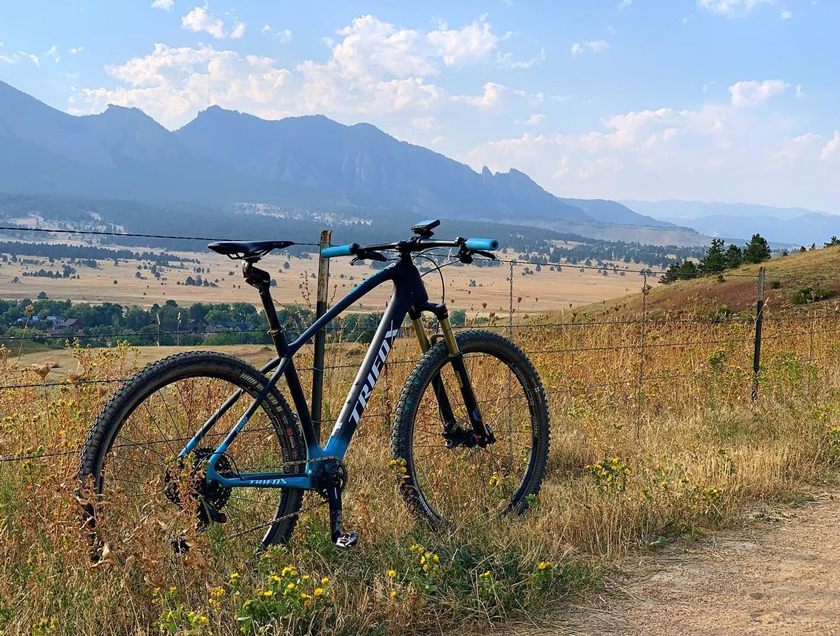
Mountain biking thrives on precision, performance, and the right gear—and nothing elevates your ride like a carbon hardtail 29er frame. Combining cutting-edge materials with smart design, this setup redefines trail agility and efficiency. Enter the Trifox MFM200, a standout example of how carbon technology and 29er geometry can transform your off-road adventures. The Carbon Advantage Carbon fiber's magic lies in its strength-to-weight ratio. The MFM200 frame weighs just 1,200 grams, offering featherlight handling without sacrificing durability. Carbon’s natural vibration-damping properties absorb trail chatter, reducing fatigue on long rides and keeping you in control over rough terrain. Unlike aluminum, it resists corrosion and flex, translating to sharper power transfer and a smoother ride. Hardtail Efficiency By ditching rear suspension, hardtails like the MFM200 eliminate weight and complexity. This design shines on climbs and fast-flowing trails, where every pedal stroke counts. Maintenance costs drop, and the direct connection to the trail enhances responsiveness—ideal for riders who prioritize speed and precision over plush suspension. 29er Wheels: Trail Domination The 29-inch wheels on the MFM20 are a game-changer. Their larger diameter rolls over roots and rocks effortlessly, maintaining momentum and boosting confidence on technical descents. Paired with the frame's optimized geometry—a 67° head tube angle and 435mm chainstays—you get a balanced ride that’s stable at speed yet nimble enough for tight corners. Trifox MFM200 Highlights -Boost Hub Compatibility: The 148x12mm rear spacing ensures stiffness and compatibility with modern drivetrains. -Internal Cable Routing: Clean lines and protected components for all-weather reliability. -Versatile Build Options: Compatible with 100–120mm suspension forks and 1x/2x drivetrains, letting you tailor the bike to your style. -XC-Ready Geometry: Aggressive yet comfortable positioning for long days on the trail. The MFM200 suits cross-country racers, endurance riders, and trail enthusiasts seeking a lightweight, efficient rig. It’s perfect for DIY builders wanting a premium carbon base without the off-the-shelf price tag. Pair it with mid-range components, and you’ll have a bike that rivals high-end models at a fraction of the cost. The Trifox MFM200 carbon hardtail 29er frame isn’t just an upgrade—it’s a revolution. By blending lightweight performance, rugged versatility, and smart design, it unlocks new levels of speed and control. Whether you’re chasing podium finishes or weekend epics, this frame ensures every ride feels like a breakthrough.
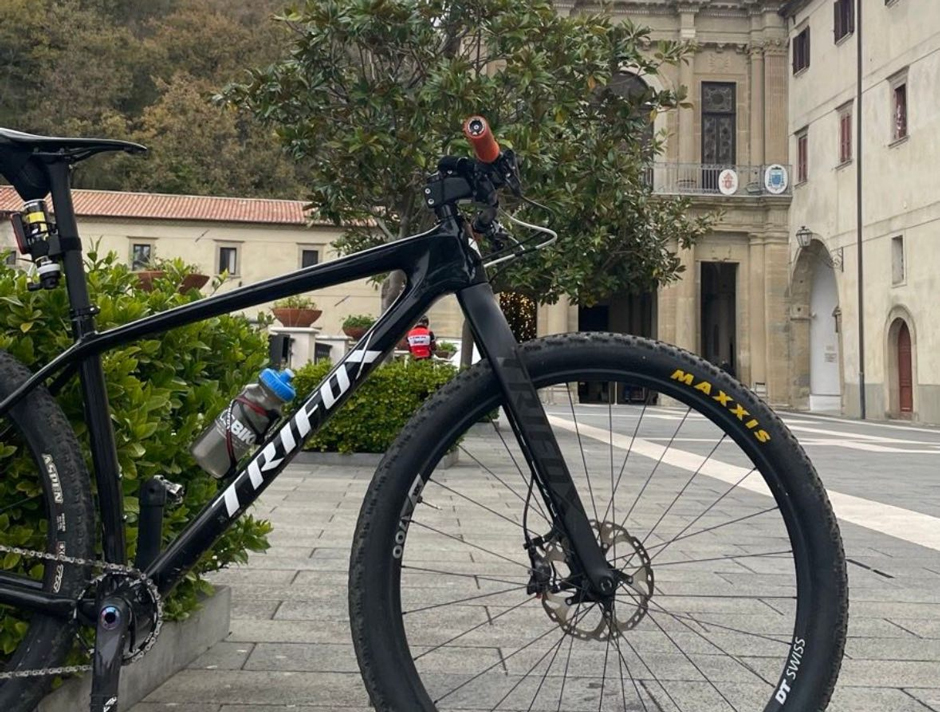
For riders seeking an affordable yet high-performance mountain bike, the Trifox Carbon Hardtail Frame (SDY20) stands out as a game-changer. This lightweight carbon frame is designed for budget-conscious cyclists who refuse to compromise on quality, making it an ideal foundation for building a custom MTB that excels on trails without draining your wallet. Why the Trifox SDY20? Weighing just 1,100 grams, this frame combines the strength and vibration-damping benefits of carbon fiber with a minimalist hardtail design. Its ultra-light build enhances climbing efficiency and maneuverability, while the absence of rear suspension reduces weight and maintenance costs—perfect for cross-country riders and trail enthusiasts prioritizing speed and simplicity. Key Features: Boost Hub Compatibility: The 148x12mm rear spacing boosts stiffness and traction, ensuring better power transfer and compatibility with modern wheelsets. Optimized Geometry: A slack head tube angle (66.5°) and longer reach provide stability on descents, while the short chainstay keeps the bike nimble on climbs and tight turns. Internal Cable Routing: Clean aesthetics and protection from dirt and debris, ideal for all-weather riding. Versatile Build Options: Compatible with 29" or 27.5" wheels and a 100–120mm suspension fork, allowing customization for your riding style. Budget-Friendly Performance Starting at under $500 for the frame, the SDY20 lets riders invest in a premium carbon foundation while saving on components. Pair it with mid-tier parts like a SRAM NX drivetrain or RockShox Judy fork, and you’ll have a trail-ready bike that rivals off-the-shelf models costing twice as much. Plus, its durability ensures long-term value, withstanding rugged terrain without the bulk of aluminum frames. Who Is It For? This frame is ideal for DIY enthusiasts eager to build a lightweight MTB tailored to their needs. Whether you’re upgrading an old bike or starting fresh, the SDY20 offers a cost-effective path to a high-performance ride. The Trifox SDY20 proves that lightweight, durable mountain biking doesn’t require a luxury budget. By prioritizing smart engineering over flashy extras, it delivers exceptional value for riders who want to tackle trails with confidence—and cash to spare for future upgrades.
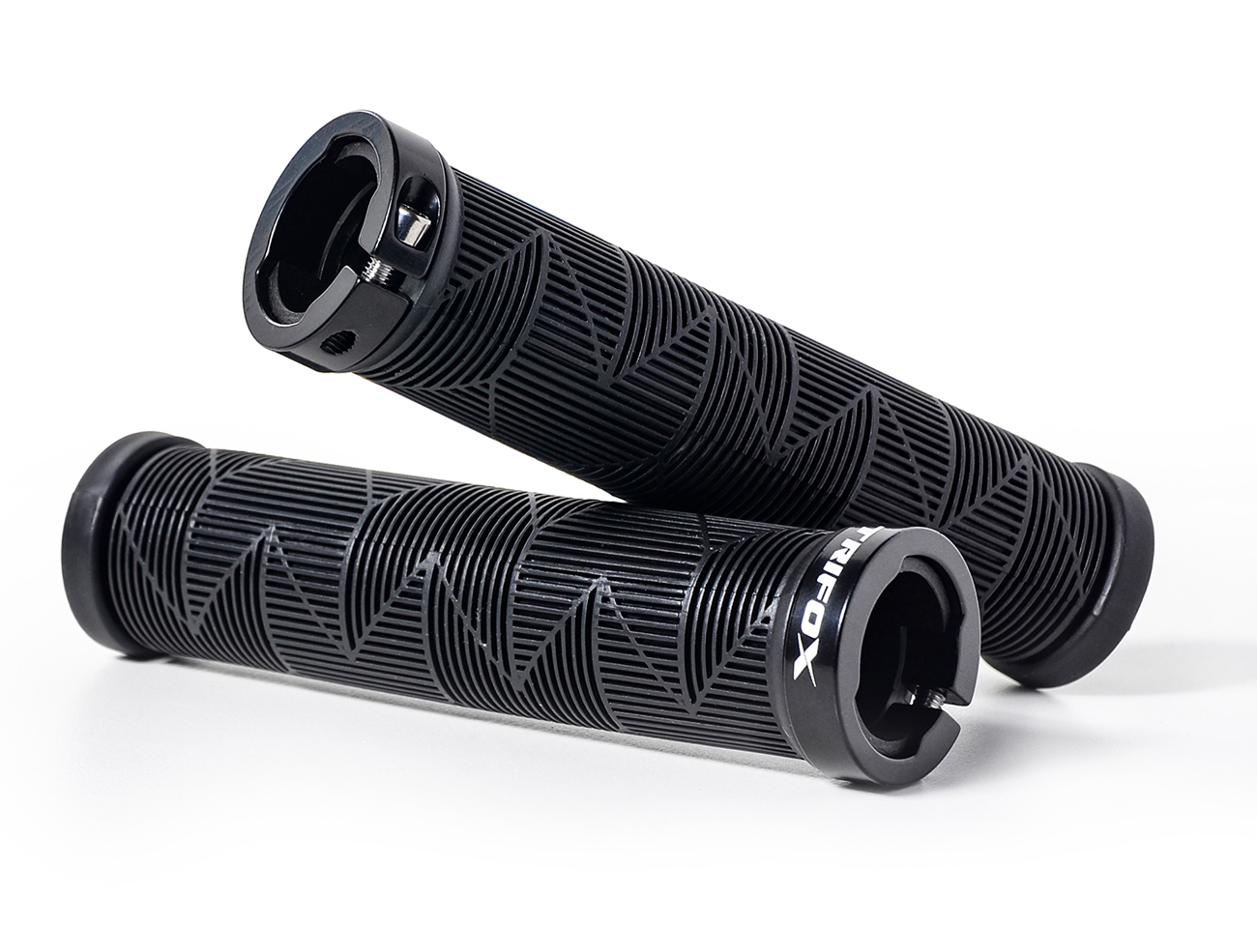
Mountain biking demands endurance, strength, and focus—but nothing derails a ride faster than hand fatigue. Numb fingers, aching palms, and reduced control are common complaints, especially on rough, technical trails. The culprit? Poorly designed grips. Enter the Trifox MTB100 Mountain Bike Grips, a game-changer for riders seeking comfort without sacrificing performance. Why Hand Fatigue Happens Hand fatigue stems from three key factors: Vibration: Rough terrain sends shockwaves through your handlebars, straining muscles and joints. Grip Pressure: Death-gripping the bars to maintain control tires out your hands and forearms. Poor Ergonomics: Grips that lack contouring or cushioning force your hands into unnatural positions. Engineered to tackle these issues, the Trifox MTB100 Grips combine innovative design with premium materials: Dual-Density Silicone: A soft outer layer absorbs trail vibrations, while a firm inner core ensures precise control. Say goodbye to the “buzz” in your hands! Ergonomic Shape: Contoured ridges and a slight palm swell distribute pressure evenly, reducing hotspots and encouraging a relaxed grip. Lock-On Security: Aluminum clamps with hex-lock bolts prevent slipping, even in wet or muddy conditions—no more readjusting mid-descent. Durable Construction: The lightweight, wear-resistant compound withstands crashes, UV exposure, and abrasion, making these grips a long-term investment. Why Choose Trifox? At $6.9, the MTB100 punches above its weight, rivaling premium brands at half the cost. Plus, they’re easy to install and come in multiple colors to match your bike’s aesthetic. Don't let hand fatigue cut your adventures short. The Trifox MTB100 Grips deliver the comfort and control you need to ride harder, longer, and happier.
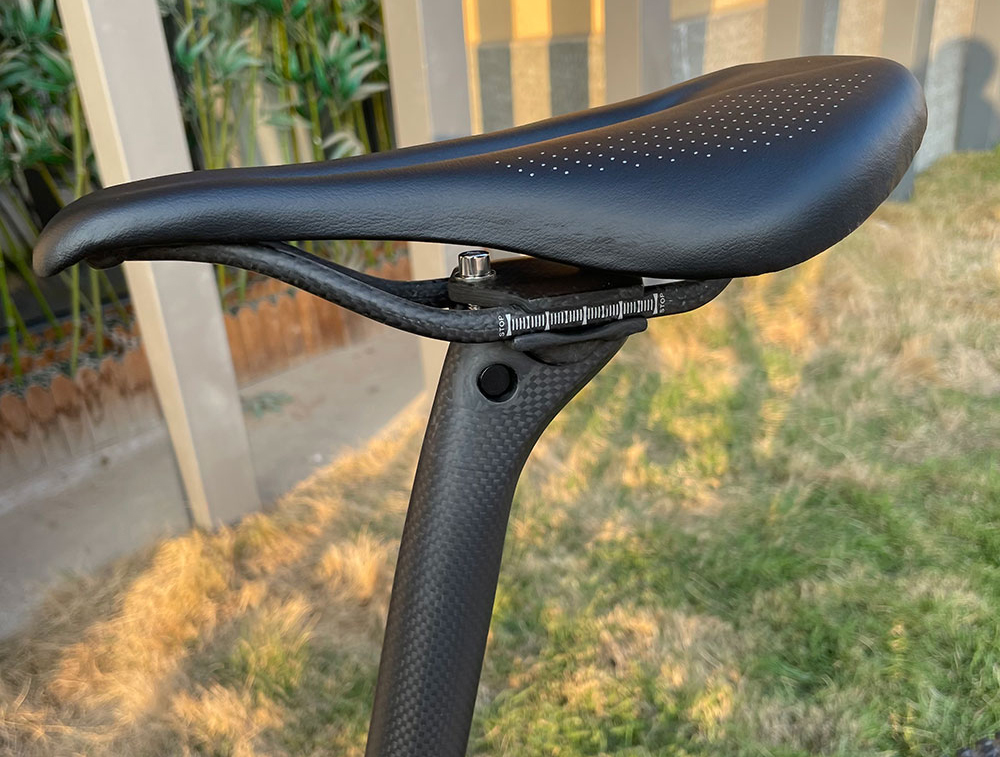
In the world of cycling, every gram counts. Whether you're a seasoned pro or a weekend warrior, finding the perfect balance between comfort, weight, and performance is crucial. Enter the full carbon saddle – a game-changer for cyclists everywhere. Today, we'll be taking a closer look at one such saddle: the CS200 from Trifox Bike, a product that promises to deliver on all fronts. At first glance, the CS200 is a sleek, minimalist design that immediately catches the eye. Its full carbon construction not only looks high-end but also serves a functional purpose. Carbon fiber is renowned for its strength-to-weight ratio, meaning that despite its lightweight nature, the saddle can withstand the rigors of even the most intense rides. But what truly sets the CS200 apart is its ability to balance comfort, weight, and performance seamlessly. Let's break down each of these aspects in detail. Weight is a critical factor in cycling, especially for those who prioritize speed and agility. The CS200 tips the scales at an impressive 120 grams, making it one of the lightest full carbon saddles on the market. This ultra-lightweight design allows cyclists to reduce overall bike weight, which can lead to improved acceleration and more efficient pedaling. For racers and competitive cyclists, every ounce counts, and the CS200 delivers in this regard. However, it's important to note that weight should never come at the expense of comfort or durability. Fortunately, the CS200 manages to strike the perfect balance. Comfort: A Ride Like No Other Cycling can be a high-impact sport, and an uncomfortable saddle can quickly turn a enjoyable ride into a painful ordeal. The CS200 addresses this issue with its ergonomic design and breathable cushioning. The saddle's shape is specifically engineered to distribute pressure evenly, reducing discomfort and preventing numbness over long rides. Furthermore, the CS200 features a breathable seat cushion that allows for better airflow, keeping you cool and comfortable even on the hottest days. This is a particularly valuable feature for cyclists who tackle long, arduous climbs or ride in hot, humid climates. In addition to its ergonomic design, the CS200 also benefits from high-quality materials that enhance comfort. The carbon fiber shell is rigid enough to provide support but also flexible enough to conform to your body's contours, creating a personalized fit that enhances comfort and performance. Performance: The Ultimate Edge When it comes to performance, the CS200 doesn't disappoint. Its lightweight design and ergonomic shape contribute to improved efficiency and reduced fatigue, allowing you to ride longer and harder. The saddle's rigid carbon fiber shell provides excellent power transfer, ensuring that every pedal stroke is translated into forward motion. Whether you're tackling a gnarly mountain bike trail or hammering out miles on the road, the CS200's performance-oriented design will have you feeling confident and in control. Its sleek, aerodynamic shape also helps to cut through the air, reducing drag and improving overall speed. Value for Money: A Smart Investment With a price tag of $49.99, the CS200 represents exceptional value for money. Considering its high-quality materials, ergonomic design, and impressive performance, it's easy to see why this saddle is a popular choice among cyclists of all levels. One of the best ways to gauge the quality of a product is to read customer reviews. The CS200 has received overwhelmingly positive feedback from cyclists who praise its comfort, lightweight design, and performance. Many reviewers note that the saddle has transformed their riding experience, making long rides more enjoyable and reducing discomfort. Conclusion: The Perfect Balance In conclusion, the CS200 from Trifox Bike is a full carbon saddle that truly balances comfort, weight, and performance. Its ultra-lightweight design, ergonomic shape, and breathable cushioning make it a standout choice for cyclists who prioritize efficiency, comfort, and value for money. Whether you're a seasoned pro or just starting out, the CS200 is worth considering for your next bike upgrade. With its impressive features and positive customer reviews, it's easy to see why this saddle has become a favorite among cyclists everywhere. So why wait?
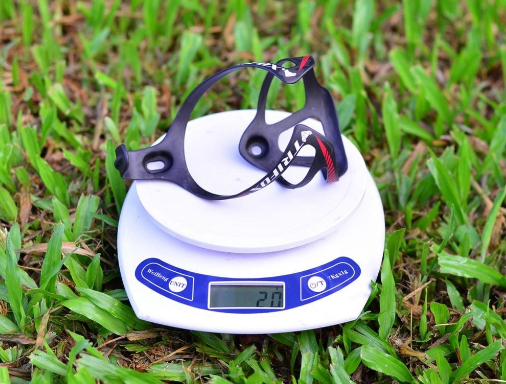
Cycling is a fantastic way to stay active, explore new places, and enjoy the great outdoors. Whether you're commuting to work, hitting the trails on a weekend adventure, or participating in a grueling endurance race, staying hydrated is crucial for maintaining performance, preventing fatigue, and ensuring overall safety. Yet, carrying water can sometimes feel like an unnecessary burden, weighing you down and making the ride less enjoyable. The solution? Investing in the right bike bottle essentials to stay hydrated without slowing down. The Importance of Hydration Before diving into the must-have bike bottle accessories, let's emphasize why staying hydrated is so important. During physical activity, your body sweats to regulate temperature, leading to fluid loss. If you don't replenish these lost fluids, you can experience dehydration symptoms such as thirst, headaches, muscle cramps, and even more severe issues like heatstroke. Hydration also supports cognitive function, helps maintain blood pressure, and ensures your muscles have the oxygen and nutrients they need to keep going. Choosing the Right Bike Bottle 1. Insulation and Material Insulated Bottles: Insulated bottles keep your drinks cool for longer, which is especially useful in warmer weather. Look for vacuum-sealed, double-walled bottles that minimize heat transfer. Lightweight Materials: Opt for bottles made from lightweight materials like stainless steel or aluminum. Plastic bottles are cheaper but can retain flavors and may degrade over time. 2. Capacity Standard Capacity (500-750 ml): Suitable for most rides, offering enough water without being too bulky. Large Capacity (1000+ ml): Ideal for long-distance rides or hot climates where you'll need more fluid. 3.Ease of Use Screw-Top vs. Flip-Cap: Screw-tops are leak-proof but can be fiddly to open on the move. Flip-caps are easier to access but may leak if not secured properly. Self-Sealing Valves: Some high-end bottles have self-sealing valves that allow you to sip without removing the cap, reducing the risk of spills. 4. Durability and Maintenance Dishwasher Safe: Makes cleaning easier and more thorough. Impact Resistance: Important if you're riding on rough terrain or in urban environments where the bottle could get knocked around. Bike Bottle Mounts and Holders Once you've chosen the perfect bottle, you need a reliable way to attach it to your bike. Here are some options: 1.Standard Bottle Cages Material: Lightweight aluminum or carbon fiber. Compatibility: Fit most standard water bottles. Placement: Typically mounted under the downtube for easy access. 2.Under-Saddle Bags Storage: Carry multiple bottles or even snacks. Access: Easier to reach than frame-mounted bottles, especially on rough terrain. Aesthetic: Great for those who prefer a cleaner look on their frame. 3. Aerodynamic Bottle Cages Design: Sleek, integrated cages that reduce drag. Placement: Often mounted on the seat tube or behind the saddle. Ideal For: Racers and triathletes looking to maximize speed. Hydration Systems For ultra-endurance rides or hot, humid climates, consider a hydration system: 1. CamelBak and Other Hydration Packs Bladder Capacity: Ranges from 1.5 to 3 liters. Tube and Bite Valve: Allows for hands-free drinking. Ventilation: Packs with good back ventilation reduce sweating and discomfort. 2. Hydration Packs with Pockets Storage: Carry extra gear, nutrition, and tools. Customizable: Some packs let you adjust the bladder and pocket positions for a perfect fit. Hydration Tips for Cyclists 1. Pre-Hydrate: Start your ride already hydrated by drinking plenty of water before setting out. 2. Sip Regularly: Aim to take small sips every 10-15 minutes to maintain hydration levels. 3. Electrolytes: Use sports drinks or electrolyte tablets if your ride is long or intense to replace lost sodium, potassium, and magnesium. 4. Temperature: Drink cool water to help your body regulate temperature more effectively. 5. Monitor Urine Color: A good indicator of hydration status – clear to light yellow is ideal. Staying hydrated while cycling doesn't have to be a hassle. With the right bike bottle essentials and a bit of planning, you can keep yourself refreshed and ready to tackle any ride. Remember, hydration is not just about performance; it's about safety and enjoyment. So, invest in good quality bottles, holders, and systems, and make sure you're always prepared to keep pedaling. Happy riding!
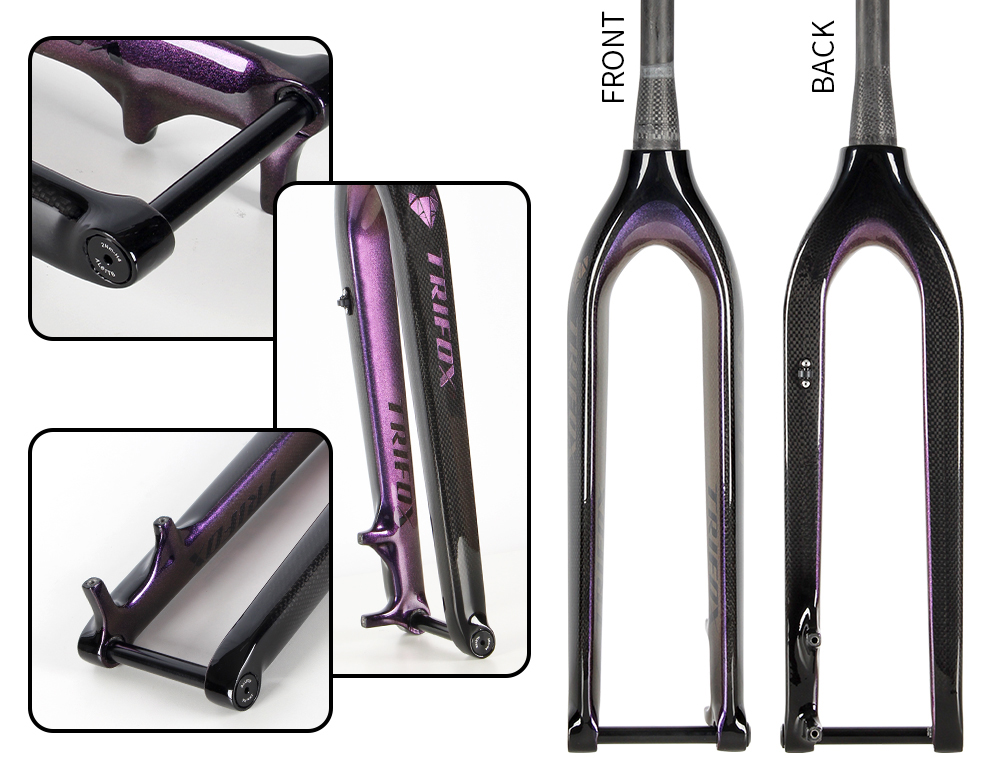
When upgrading or building your mountain bike, one of the key decisions you’ll face is whether to go with a Boost or non-Boost chainring. This choice can significantly impact your bike’s performance, compatibility, and overall ride quality. But what exactly is the difference, and how do you know which one is right for you? Let’s break it down. Understanding Boost vs. Non-Boost The term “Boost” refers to a newer standard in mountain bike design that widens the hub spacing—from 142mm to 148mm in the rear and from 100mm to 110mm in the front. This wider spacing allows for stiffer wheels, better tire clearance, and improved chainline alignment. As a result, Boost-compatible chainrings are designed to work with this updated spacing, ensuring optimal performance and shifting precision. Non-Boost chainrings, on the other hand, are designed for traditional hub spacing. While they’re still widely used and compatible with older bikes, they may not offer the same level of stiffness and tire clearance as Boost setups. Which One Do You Need? The answer depends on your bike’s specifications. If you’re riding a modern mountain bike with Boost spacing, you’ll need a Boost chainring to maintain proper chainline and shifting performance. However, if your bike uses traditional spacing, a non-Boost chainring is the way to go. It's also worth considering your future plans. If you’re upgrading other components, like your fork (check out Trifox Bike’s rigid forks at TrifoxBike.com), opting for Boost compatibility can future-proof your setup and unlock additional benefits like improved wheel stiffness and tire options. Choosing between Boost and non-Boost chainrings ultimately comes down to your bike’s specifications and your riding goals. If you’re unsure, consult your bike’s manual or a trusted mechanic. And if you’re in the market for high-quality components, Trifox Bike offers a range of options to suit your needs. Whether you’re sticking with non-Boost or embracing the Boost revolution, the right chainring will keep your ride smooth and efficient.
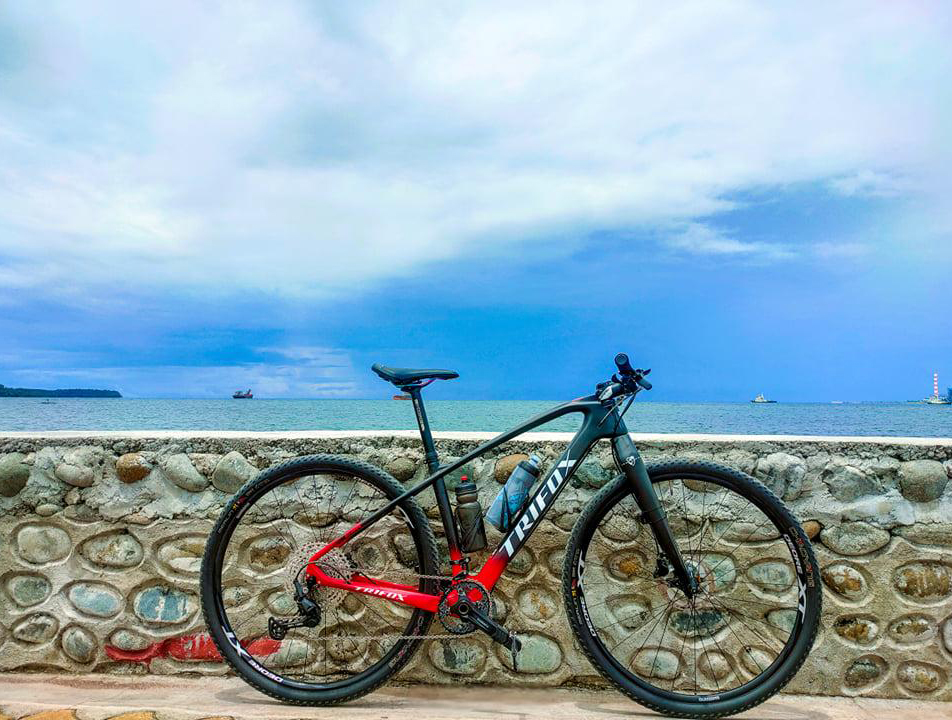
When it comes to cross-country (XC) mountain biking, every gram matters. The quest for speed, efficiency, and control on rugged trails has led to the rise of carbon XC hardtail frames, the ultimate weapon for riders looking to dominate the competition. These frames are not just lightweight; they are precision-engineered machines designed to deliver unmatched performance on demanding terrain. If you're serious about XC racing or simply want to elevate your trail experience, a carbon hardtail frame is a game-changer. Why Carbon? The Science Behind the Speed Carbon fiber has become the gold standard for high-performance bike frames, and for good reason. Its unique properties—lightweight, stiff, and incredibly strong—make it the ideal material for XC hardtails. Unlike aluminum or steel, carbon fiber can be molded into complex shapes, allowing engineers to optimize every inch of the frame for stiffness, compliance, and aerodynamics. This means you get a bike that accelerates faster, climbs more efficiently, and handles technical descents with confidence. The lightweight nature of carbon XC frames is a major advantage. Weighing in at just over 1,000 grams for some models, these frames shave precious seconds off your lap times. Less weight means less effort to pedal uphill and more agility on tight, twisty trails. But don’t let the lightness fool you—carbon frames are incredibly durable, designed to withstand the rigors of XC racing and aggressive trail riding. Trail Domination: Performance You Can Feel The beauty of a carbon XC hardtail lies in its simplicity. Without the added complexity of rear suspension, these bikes are direct power transfer machines. Every ounce of energy you put into the pedals goes straight to the trail, making them incredibly efficient on climbs and flat sections. The stiffness of the carbon frame ensures minimal flex, so you can sprint out of corners and power over obstacles with precision. But it’s not just about raw speed. Modern carbon hardtails are designed with trail performance in mind. Features like tapered head tubes, thru-axles, and aggressive geometry provide stability and control on technical descents. Pair that with a lightweight carbon fork, and you’ve got a bike that’s as capable on rocky, root-filled trails as it is on smooth singletrack. Trifox Bike: Your Gateway to Carbon Excellence If you’re ready to experience the thrill of a carbon XC hardtail, look no further than Trifox Bike. Their range of carbon mountain bike frames, like the ones found at TrifoxBike.com, offers exceptional quality and performance at a competitive price. Whether you’re building your dream XC race bike or upgrading your current ride, Trifox frames deliver the perfect balance of weight, stiffness, and durability. In conclusion, carbon XC hardtail frames are the ultimate choice for riders who demand speed, efficiency, and trail domination. With their lightweight construction, precision engineering, and unmatched performance, these frames are redefining what’s possible on the trail. So, if you’re ready to take your riding to the next level, it's time to go carbon. Your next personal best is waiting.
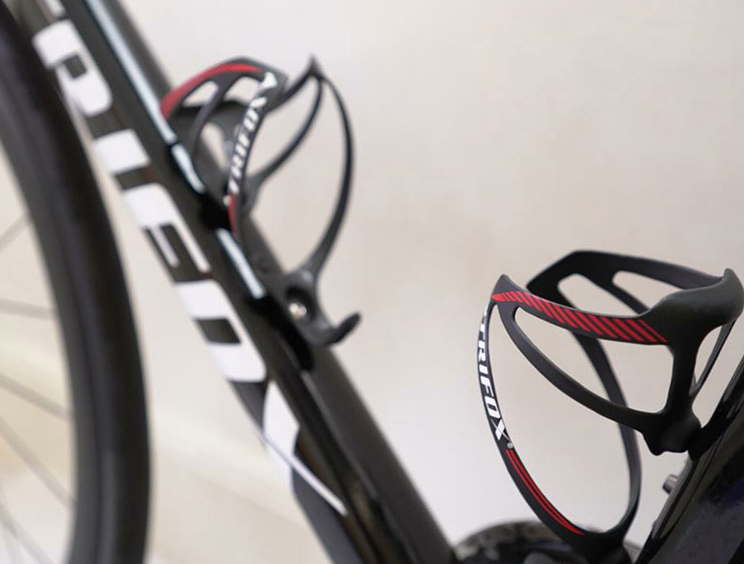
If you're a cyclist, staying hydrated is essential, and bottle cages are a must-have accessory. But if you’re wondering, “Do bottle cages fit all bikes?” the answer isn’t as straightforward as you might think. Let’s dive into the details to help you find the right fit for your ride. Standard Bottle Cage Mounts Most modern bikes come with pre-drilled mounting holes on the frame, typically located on the downtube and/or seat tube. These holes are designed to fit standard bottle cages, which use two bolts for attachment. If your bike has these mounts, you’re in luck – most standard cages will fit without issue. Compatibility Considerations While many bikes support bottle cages, there are exceptions and special cases: 1. Small Frames: Smaller bike frames, especially on road or mountain bikes, may have limited space for bottle cages. In some cases, only one cage may fit, or you might need a compact or side-loading cage. 2. Aero Bikes: High-performance aero bikes often have unconventional frame designs that may not accommodate traditional cages. Some use integrated hydration systems or require proprietary cages. 3. Carbon Frames: If your bike has a carbon frame, ensure your cage bolts are tightened to the manufacturer’s recommended torque to avoid damaging the frame. 4. Non-Standard Mounts: Some bikes, like folding bikes or certain gravel bikes, may use alternative mounting systems or require adapters. Solutions for Unique Bikes If your bike doesn't have standard mounts, don’t worry! There are plenty of solutions: - Strap-On Cages: These use straps to attach to your frame, making them versatile for bikes without mounts. - Seatpost Mounts: Attach a cage to your seatpost for an extra hydration option. - Handlebar Cages: Perfect for bikes with limited frame space, these mount directly to your handlebars. While most bikes can accommodate bottle cages, it’s important to consider your bike’s specific design and mounting options. With the right cage or adapter, you can ensure you stay hydrated on every ride.

















